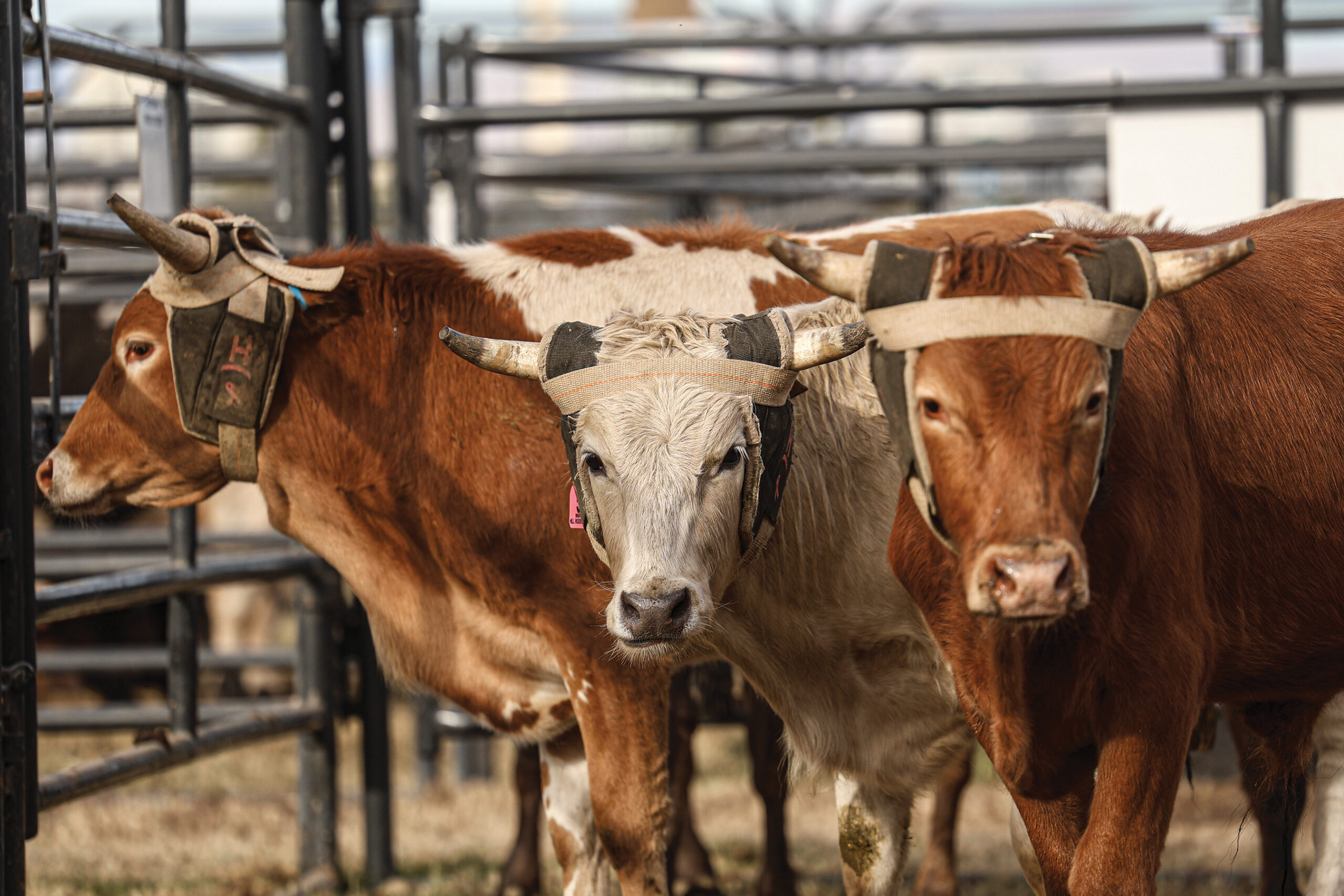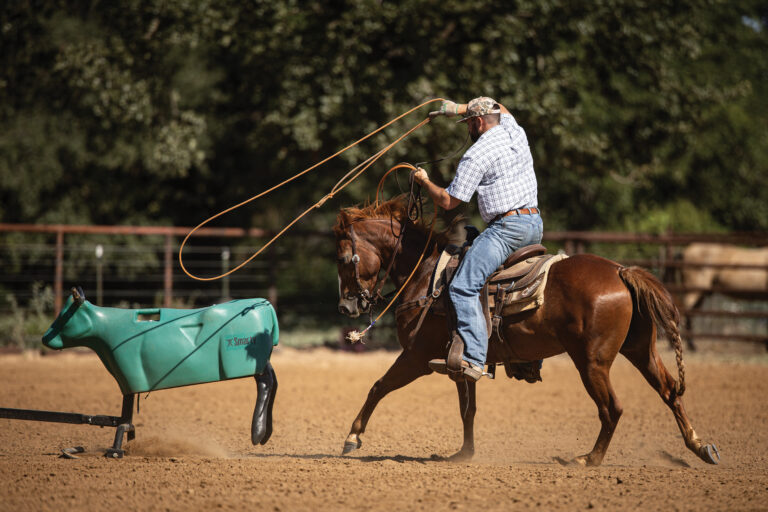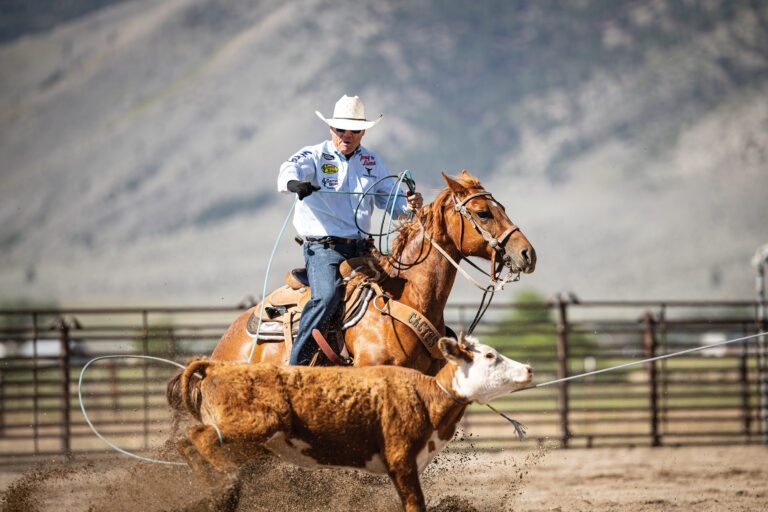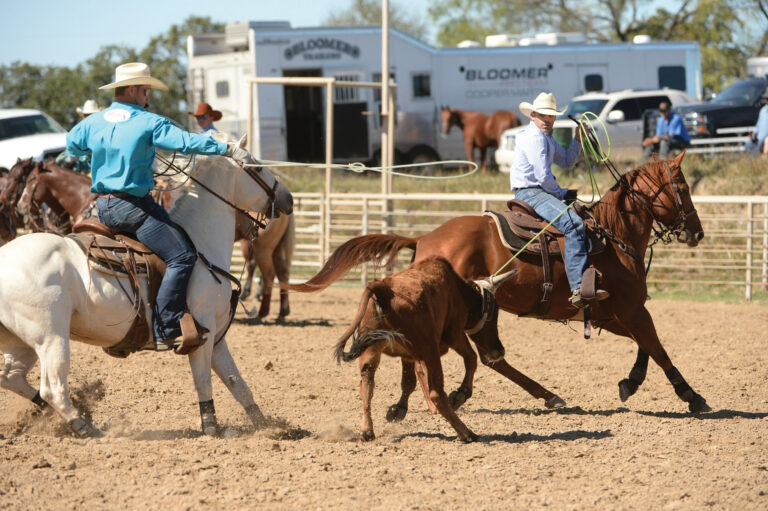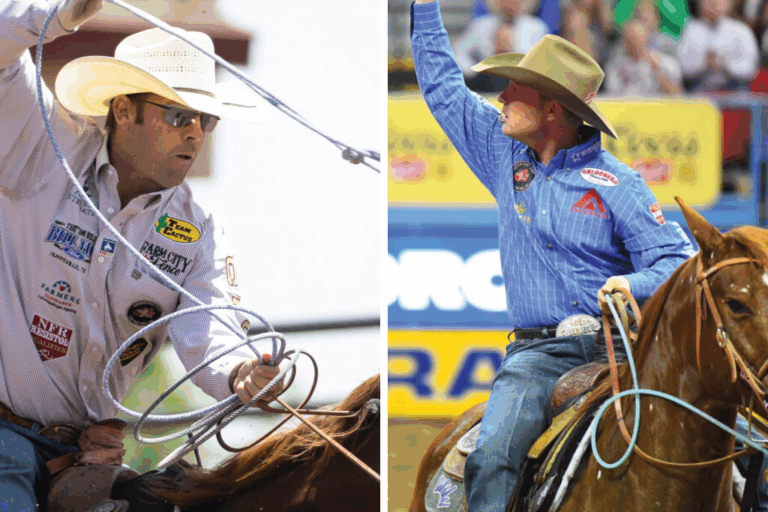The allure of “freshies” is real. In fact, Mexican steers are as addictive as any drug to Oregon contractor Tygh Campbell, who, for a decade, has provided roping steers to pro rodeos like Pendleton, Nampa, Ellensburg and Cheyenne.
Cattle with the M brand have always been the holy grail; they’re less wild to handle and more honest to rope. They also last longer in the arena and feed up better at the end of their careers.
Contractors play the steer market every season, sometimes losing a little and sometimes a lot. But this winter, they faced a parasite outbreak that closed the Mexican border for several weeks, plus the threat of a 25% tariff. There was more hand-wringing and nail biting than usual from producers, all scrambling for the same shortened number of steers. We talked to several about supply, demand and quality this year.
Supply vs. demand
It has always been tricky to import Mexican cattle, but that’s especially true now.
“When you buy a load at the border now, they weigh anywhere from 275 to 500 pounds,” said futurity producer and NFR heeler Matt Zancanella. “It takes three or four loads to get a couple hundred ready-to-rope steers. And there are so many guys who need steers, it’s crazy.”
The reason for so much variance in the steers is twofold, according to New Mexico’s Matt Sanchez, who crossed Mexican roping steers for producers for 21 years. For one, Mexican ranchers are now sending all their cattle to the border, including the young ones, he said. Plus, there are far fewer to choose from at any given time.
Sanchez said while cattle in years past arrived at the border from Chihuahua, Durango, Sinaloa and other regions, now, because of travel restrictions, they only come from ranchers in Chihuahua.
“I remember back when we crossed 1,400 in one day,” Sanchez said. “That was a lot different and we could really even them up.”
Recent droughts in Mexico caused liquidation of a lot of cattle since there isn’t much infrastructure there to water them, Sanchez said. Combine that with roping’s popularity, the continued explosion of handicapped team roping and record beef cattle prices, and it costs more than ever to import a Corriente.
Even before the border closure, they were going for $1,300 a head. When the Hamilton (Texas) Commission Company sold 889 head of roping cattle at press time, the better end of the fresh steers sold $400 per head higher than they had in November. Fresh Corrientes went for $1,225 to $1,470 and Longhorns for $800 to $1,000.
The trend was enough to send Campbell “to rehab” this year. He completely quit the steer business.
“I could see the writing on the wall,” he said. “And I couldn’t make that dog hunt.”
Hedging bets
In truth, it’s always taken a cagey contractor to avoid taking a financial bath on the backside of roped-out steers. Campbell used to buy about 300 head over the border in early fall when demand was down. Then he’d save on feed by partnering with Idaho reined cowhorse trainer Jake Telford, who used the steers first in his program.
After Pendleton, Campbell would sell the steers to Ben Tibbetts of Triple T Productions to use at World Series ropings.
Similarly, jackpot producers, who rarely own their own cattle, are forced to lease whatever cattle are available from cattle contractors. While this helps cattle contractors avoid relying on market fluctuations at sale barns, it’s a challenge for event producers to always have ‘good cattle,’ which has put some in the position to own cattle.
“I knew what Ben would give me within $50 a head, plus I knew my input costs and run money,” Campbell said. “This year I called Ben and asked if he wanted to pay $1,300 or $1,400 a head next fall for his roping cattle, and he said he couldn’t make that work.”
Kyle Chrisman uses some 800 head for his weekly ropings in Arizona each winter, then sends some north to Montana’s Dustin Bird for summer rodeo contracts. A savvy contractor is always thinking six months down the road, he said.
But that was Campbell’s problem. He realized if steers drop back to $900 a head, a guy could lose $400,000. So, this year, he bought some beef calves and decided to put on breakaway ropings. In February, after he’d given up all his rodeo contracts, Campbell got a call from a young contractor in Montana, desperately trying to find rodeo contracts. The guy had spent $1,500 per head just to cross the steers—and still hadn’t paid for TB testing or freight to Montana.
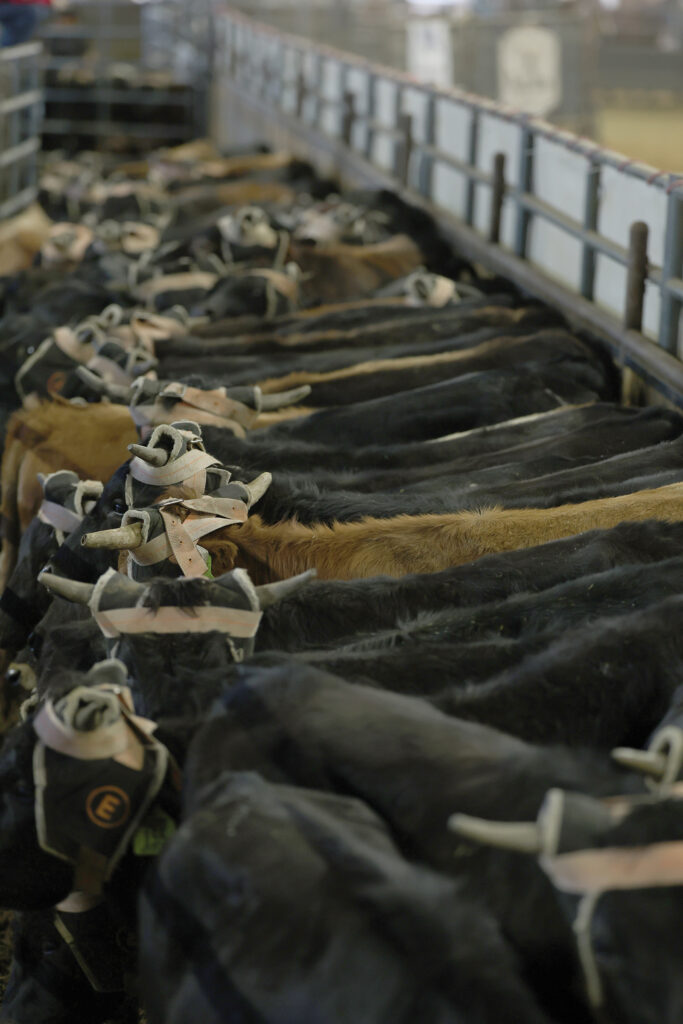
Demand rising with costs
“This game was more fun when steers cost $500 to $600 a head, not $1,300,” Chrisman said. “I bought 230 of them and had the noose tied, sitting there by me.”
Like other contractors, he prays the market doesn’t crash.
“It wouldn’t surprise me if steers get to $1,500 or $1,600 a head across the border,” Chris Francis of Mathews Cattle Company said. “When I started about 18 years ago, we were giving $450.”
To help alleviate the pinch, rodeos offered Campbell more money per run, but it still wasn’t enough. A load of 200 steers last year cost $200,000; this year, it’s $325,000. The juice just isn’t worth the squeeze, he said.
Sanchez doesn’t see the market changing for a while.
“The beef complex is pretty stable and I think it’ll be bullish moving forward,” he said. “But as long as there’s a beef shortage and some salvage value to these steers, a guy can afford to give a little more at the border and make it work.”
Sanchez points out that it was a lot harder in the old days, when a producer would pay $1,000 for a fresh Mexican and get 50 cents per pound on the backside. Today, those numbers are closer together.
Natives to the rescue
When this winter’s border closure left Zancanella without enough fresh Mexicans for his Royal Crown futurity in Arizona, he was forced to pay $1,275 per head for 81 extra American-raised bulls out of Texas.
“I can’t believe they didn’t fight at all,” Zancanella said. “They were unreal.”
In fact, while M-branded Corrientes are still preferred, Americans with Corriente cows are starting to raise steers that are better-behaved and more even. Producers just aren’t going to have any other choice sometimes.
The latest World Series Finale used mostly native Corrientes, and so will this month’s USTRC Finals, where Mason Johnson manages the steers (his dad is USTRC President Johnny Johnson). They come from Lee Ranch Corriente Cattle near San Angelo, Texas.
“They’re black, fat and pretty,” Johnson said. “And they last.”
Chrisman buys as many Mexicans as he can, but also gets a set of black natives from Lee Ranch.
“They do a good job culling their cows and they use registered bulls,” he said. “Those steers never get too big and have a great horn pattern with no Brahmer or Longhorn in them. They’ve helped me get a reputation for top-notch cattle down here.”
In the Southeast, contractors have to piecemeal loads together. East Coast Cattle buys potential steers for an entire year to have enough for JX2’s annual NTRL Finals.
“Everything we rope in the Southeast is a native,” said Johnson, who sold East Coast Cattle to Georgia’s Tyler Boatright but still contracts steers at International Professional Rodeo Association rodeos. “It just keeps getting harder, though, because fewer and fewer people are raising steers. When somebody calls and says, ‘I have 20 steers for sale,’ you have to buy them. Half might be ready to rope and half might weigh 300. It’s hard to make it work out here.”
In California, Steve Simons usually kicks off his rodeo contracts with 200 Mexicans, but has just 120 this year. Luckily, the PRCA, whose bylaws demand Mexican steers, this year will allow contractors to bring natives to a lot of big rodeos.
“We’ve got a guy who raises phenomenal Mexican-like natives, so we pay him $1,200 a head to take all his cattle,” Simons said. “They’re as good as you can get. But we’re still paying huge money for natives.”
Mathews Cattle raises its own, while also going through 400 to 500 Mexicans each season. And the Philipps Ranch in South Texas has for years raised its own Corrientes and roped the heifers at jackpots. They’ve sold loads to Scott Gage of 3 Point Productions and annually to a contractor in North Dakota, where M-branded cattle aren’t allowed.
While producers still prefer sport cattle with the M brand, it’s all business.
“In a perfect world, I’d love to rope Mexicans all the time,” Johnson said. “I bought a load a few years ago and they lasted a lot longer than the natives. But right now, I can give $900 for a native and can rope it, and get $900 on the back end. So it’s hard to see the need to pay $1,450 for a Mexican.”
American Corrientes are stepping up as part of some great ropings, despite Campbell’s stance on their counterparts south of the border.
“I’ve been doing it for 10 years and I can promise you, there’s a reason Mexican steers cost more money,” he said. “They’re worth it.”
Getting some home
Whatever handful of practice steers you get your hands on this season will likely reflect the larger steer market.
Simons sells practice cattle for $900 to $1,000 a head, which later bring around $600 or $700 at the sale barn.
“If we’re putting $450 with an old steer to buy a new one, we’re going backward,” he said. “If it weren’t for my contracts, I would’ve sat this year out. Nobody predicted the border closing. And we can’t really raise fees.”
For leased steers, Simons gets $75 per head per month, because he just doesn’t have enough available to lease out. With contractors having fewer cattle, he thinks producers might have to cull less. He feels fortunate he bought a lot of too-small steers last year and turned them out.
Chrisman won’t lease steers by the month anymore, because people would “smoke them and bring them back” and try to trade. He’s getting $70 per head per month, but needs a five-month contract.
As tight as things are for plenty of ropers this season, it’s a good time to also grant some grace to competitive producers trying to amass first-class cattle.
“A lot of people need to make tough decisions moving forward,” Campbell said.
Event producers try to pay cattle providers as much as they can. But where’s the threshold?
“You can’t expect a producer to lose $10,000 to $15,000 every weekend just to have ropings,” Johnson said.
He doesn’t see steer prices going down anytime soon.
“If the beef market stays high, the roping steer market will be fine,” he said. “It’s going to drop sometime, though, so it just depends where you’re at when it drops.”
Sanchez had a great seat for the annual Mexican steer migration for two decades, and knows that veteran producers will always do whatever they can to make things work.
“I could probably send a herd of donkeys to Ty Yost or Jeff Smith and they could put on a good roping,” Sanchez said. “They know how to match steers up. There’s a reason those guys have been in the business so long. Sure, people love Mexicans. But you don’t need them to have a great roping.”
—TRJ—




